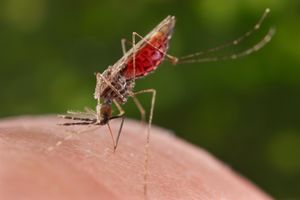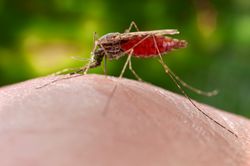Difference between revisions of "Anopheles merus"
From Pestinfo-Wiki
| (5 intermediate revisions by the same user not shown) | |||
| Line 1: | Line 1: | ||
{{TaxLinks|LnkAnopheles}} | {{TaxLinks|LnkAnopheles}} | ||
| − | {{LiteratureDB|{{PAGENAME}}|browse}} | + | {{LiteratureDB|{{PAGENAME}}|browse,benefialsN}} |
| − | [[File:Anopheles merus | + | [[File:Anopheles merus CDC18763.jpg|300px|thumb|''Anopheles merus'' (click on image to enlarge it)<br/>Author: James Gathany/CDC<br/>Source: [https://phil.cdc.gov/Details.aspx?pid=18763 CDC Public Health Image Library]]] |
| − | <font color="#800000">'''''Anopheles merus'''''</font> | + | [[File:Anopheles merus CDC18762.jpg|250px|thumb|left|''Anopheles merus'' (click on image to enlarge it)<br/>Author: James Gathany/CDC<br/>Source: [https://phil.cdc.gov/Details.aspx?pid=18762 CDC Public Health Image Library]]] |
| + | <font color="#800000">'''''Anopheles merus'''''</font> Donitz, 1902 | ||
| − | + | This mosquito can be found in coastal areas of Eastern and Southern Africa. Here it breeds in pools and ponds of salty water with a salinity of up to 50%, including coastal swamps and crab holes. It is an important vector of malaria, biting humans during the night but also other mammals like cattle. | |
| + | |||
| + | Taxonomically, ''A. merus'' is related to ''[[Anopheles gambiae]]'' and has been previously regarded as a variant or subspecies of ''A. gambiae''. | ||
| + | |||
| + | For a review see [[Parasites and Vectors (2021) 14 (84) - Bionomics and ecology of|Bartilol et al. (2020)]]. | ||
[[Category:Anopheles (genus)]] | [[Category:Anopheles (genus)]] | ||
Latest revision as of 11:47, 22 March 2021
| Literature database |
|---|
| 37 articles sorted by: |
| • year (recent ones first) |
| • research topics |
| • countries/regions |
| • list of natural enemies |

Anopheles merus (click on image to enlarge it)
Author: James Gathany/CDC
Source: CDC Public Health Image Library
Author: James Gathany/CDC
Source: CDC Public Health Image Library

Anopheles merus (click on image to enlarge it)
Author: James Gathany/CDC
Source: CDC Public Health Image Library
Author: James Gathany/CDC
Source: CDC Public Health Image Library
Anopheles merus Donitz, 1902
This mosquito can be found in coastal areas of Eastern and Southern Africa. Here it breeds in pools and ponds of salty water with a salinity of up to 50%, including coastal swamps and crab holes. It is an important vector of malaria, biting humans during the night but also other mammals like cattle.
Taxonomically, A. merus is related to Anopheles gambiae and has been previously regarded as a variant or subspecies of A. gambiae.
For a review see Bartilol et al. (2020).